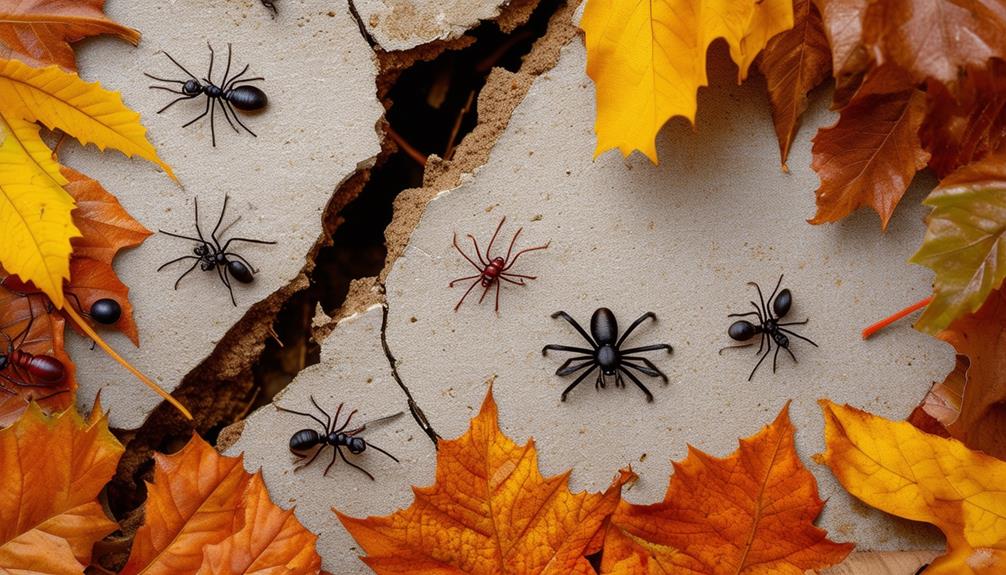According to a recent study conducted by the National Pest Management Association, approximately 30% of homeowners have reported hearing scratching sounds in their walls at some point. These unsettling noises can cause a great deal of distress and anxiety, as they often indicate the presence of unwanted pests or other potential issues within the home.
In this article, we will explore the various steps that can be taken when one hears scratching in the walls, providing an informative and authoritative guide to address the situation effectively.
When faced with scratching sounds in the walls, it is crucial to first identify the source of the noises. While pests such as rodents and insects are common culprits, it is also important to consider other potential causes such as plumbing issues or structural problems.
Once the source has been determined, immediate action should be taken to prevent further infestation or damage to the property. This may involve sealing off entry points, setting up traps or baits, or seeking professional assistance from a pest control service. By taking proactive measures, homeowners can eliminate the source of the scratching sounds and restore a sense of peace and security to their living environment.
Key Takeaways
- Systematically investigate and identify the source of the scratching sounds.
- Take immediate action to prevent further infestation or damage.
- Consult a professional pest control service for expert advice and treatment options.
- Implement prevention strategies to discourage pests and prevent future infestations.
Identify the Source of the Scratching Sounds
One potential step to take when hearing scratching sounds in the walls is to systematically investigate and identify the origin of the noises, as this can provide valuable insights into the underlying cause of the issue.
Identifying the source of the scratching sounds is crucial in order to take appropriate measures and prevent further infestation. To begin, it is important to listen carefully and try to determine the location of the sounds. Pay attention to the intensity, frequency, and duration of the scratching noises. By doing so, one can gain a better understanding of the potential pests or animals that might be causing the disturbance.
After identifying the general area of the scratching sounds, it is recommended to inspect the walls and surrounding areas for any signs of entry points or damage. Look for small holes, gaps, or cracks that could serve as access points for pests. Additionally, check for other indications such as droppings, gnaw marks, or nests. These can provide further clues about the type of animal or pest that is responsible for the noises.
Taking these initial steps to identify the source of the scratching sounds can help homeowners or occupants determine the appropriate course of action to address the issue and prevent further infestation.
In order to take immediate action to prevent further infestation, it is important to address the identified entry points and seal them off. This will help to prevent any additional pests from entering the premises. Additionally, contacting a professional pest control service may be necessary to properly handle and remove any pests that may have already established themselves within the walls.
By promptly addressing the issue and implementing preventive measures, individuals can ensure a safer and more comfortable living environment.
Take Immediate Action to Prevent Further Infestation
To prevent further infestation, it is crucial to take immediate action.
First, seal any openings or cracks in the walls to prevent pests from gaining entry. This will help to eliminate potential entry points and limit their ability to access your home.
Additionally, removing any potential food sources, such as exposed garbage or pet food, will make your property less attractive to pests and discourage them from returning.
Seal any openings or cracks in the walls
Sealing any openings or cracks in the walls prevents potential entry points for pests and helps maintain the structural integrity of the building. By effectively sealing these openings, you can create a barrier that will keep pests such as rodents, insects, and other small animals from entering your home or building. This not only helps to prevent infestations but also reduces the risk of damage to the walls and other areas of the structure. When it comes to sealing techniques, there are several options available, ranging from simple DIY repairs to more complex professional solutions.
To seal openings or cracks in the walls, you can use a variety of materials such as caulk, foam sealant, or weatherstripping. These materials can be easily applied to seal gaps around windows, doors, vents, and utility openings. It is important to carefully inspect the walls for any signs of damage or gaps and address them promptly. Additionally, it is recommended to use weather-resistant materials to ensure long-lasting effectiveness. By sealing these openings, you not only prevent pests from entering your space but also improve energy efficiency by reducing drafts and heat loss.
Transitioning to the next section about ‘remove potential food sources,’ it is important to note that sealing openings and cracks in the walls is just one step in effectively dealing with a potential pest infestation.
Remove potential food sources
Eliminating potential food sources is crucial in effectively managing and preventing pest infestations. Pest prevention starts with proper sanitation practices that deny pests access to food and water.
Here are three sub-lists to help you understand the importance of removing potential food sources:
- Store Food Properly:
- Keep food in sealed containers to prevent pests from accessing it.
- Store pet food in airtight containers and avoid leaving it out overnight.
- Clean up spills and crumbs promptly to avoid attracting pests.
- Maintain Cleanliness:
- Regularly clean your kitchen, including countertops, sinks, and floors.
- Dispose of garbage regularly and use sealed trash cans.
- Clean up pet areas and remove any leftover food.
- Remove Clutter:
- Declutter your home and remove any unnecessary items that pests can hide in.
- Inspect and clean areas where pests can hide, such as behind appliances and under furniture.
- Keep your yard tidy by removing debris and trimming vegetation.
By following these practices, you can greatly reduce the availability of food sources for pests, making your home less attractive to them. This step is essential in preventing pest infestations and maintaining a pest-free environment.
To effectively address a pest infestation or if you require professional advice, it is advisable to consult a professional pest control service.
Consult a Professional Pest Control Service
When faced with a potential infestation of rodents or insects in your home, it is crucial to consult a professional pest control service to get expert advice on how to effectively deal with the issue.
These professionals have the knowledge and experience to assess the extent of the infestation and provide safe and effective treatment options.
Their expertise can ensure that the problem is addressed thoroughly and prevent further damage or health risks.
Get expert advice on dealing with rodents or insects
One compelling reason to seek expert advice when dealing with scratching in the walls is that rodents and insects can cause significant damage to the structural integrity of a building. For instance, it is estimated that 20% of all electrical fires in the United States are attributed to rodent activity. Rodents have a tendency to chew on electrical wires, which can lead to exposed wiring and potential short circuits.
In addition to the fire hazards they pose, rodents and insects can also damage insulation, pipes, and wooden structures, compromising the overall stability of the building. Therefore, it is crucial to consult with professionals who are knowledgeable about pest control methods and can provide effective solutions to mitigate these risks.
In seeking expert advice, it is important to understand rodent or insect behavior in order to effectively address the issue. Different pests require different approaches, and experts can identify the specific type of pest infestation and devise appropriate strategies for eradication. They possess the knowledge and experience to identify signs of infestation, such as droppings, gnaw marks, or peculiar noises, which can help determine the extent of the problem.
By understanding the behavior and habits of pests, professionals can recommend targeted solutions that not only eliminate the current infestation but also prevent future occurrences. Therefore, seeking expert advice is essential in effectively dealing with scratching in the walls, as it ensures a comprehensive understanding of the problem and allows for the implementation of appropriate measures to address it.
In the subsequent section, we will explore safe and effective treatment options that can be undertaken to resolve the issue of scratching in the walls.
Explore safe and effective treatment options
To effectively address the issue of scratching in the walls, it is important to explore safe and effective treatment options that can provide a lasting solution.
When dealing with rodents or insects causing the scratching sounds, it is crucial to consider treatment options that are both safe for humans and effective in eliminating the pests. One common approach is the use of traps or baits specifically designed for the targeted pests. For rodents, snap traps or glue traps can be effective in capturing and removing them from the walls. It is important to place the traps strategically in areas where the scratching sounds are most prominent. Additionally, using baits that contain poison can be an effective method to eliminate rodents or insects. However, caution must be exercised when using these products to ensure they are placed out of reach of children or pets.
In addition to treatment options, prevention strategies should also be considered to prevent future infestations and recurring scratching sounds in the walls. Some effective prevention methods include sealing any cracks or gaps in the walls or foundation of the building. This can help prevent rodents or insects from entering and finding their way into the walls. Additionally, maintaining cleanliness and proper sanitation can also discourage pests from infesting the premises. Regularly cleaning up food spills, storing food in airtight containers, and disposing of garbage properly can help reduce the likelihood of attracting pests. Implementing these prevention strategies alongside the treatment options can provide a comprehensive approach to address the scratching sounds in the walls.
To address other possible causes of the sounds, it is important to assess the situation further and consider other factors that may be contributing to the issue.
Address Other Possible Causes of the Sounds
When addressing other possible causes of sounds in the walls, it is important to check for bird or squirrel nests in or near the walls. These animals may build their nests in hidden spaces, leading to scratching sounds.
Additionally, inspecting for signs of insect infestations is crucial as certain pests, such as termites or carpenter ants, can cause similar noises as they burrow through wood.
Taking these steps will help identify and address any potential sources of the sounds.
Check for bird or squirrel nests in or near the walls
Inspecting the interior and exterior of the walls for the presence of bird or squirrel nests is recommended when scratching sounds are heard. It is important to rule out the possibility of animals nesting in or near the walls, as this can be a common cause of scratching noises.
Begin by checking the exterior of the walls for any visible signs of nests, such as bird nests in the eaves or squirrel nests in nearby trees. If nests are found, it is advisable to contact a professional wildlife removal service to safely remove them.
Additionally, inspect the interior of the walls by listening for any rustling or movement and visually examining any accessible areas. Look for signs of nesting materials, such as twigs or leaves, as well as any droppings or fur that may indicate the presence of birds or squirrels. If nests are found, it is crucial to address the issue promptly to prevent further damage to the walls or potential entry points for other animals.
In cases where scratching sounds are heard but no nests are found, it is still important to consider the possibility of other animal infestations. For example, wasps and bees can sometimes create nests within the walls, leading to scratching sounds. If wasp nests are suspected, it is recommended to call a professional exterminator to safely remove them, as attempting to do so yourself can be dangerous.
Furthermore, inspecting the walls for signs of insect infestations, such as small holes or trails of sawdust, is essential. This will help identify if there are any pests, such as termites or carpenter ants, causing the scratching sounds.
By thoroughly checking for bird or squirrel nests and inspecting for signs of insect infestations, you can take the necessary steps to address the scratching sounds in the walls and ensure the integrity of your home.
Inspect for signs of insect infestations
Signs of insect infestations can be identified by inspecting the walls for small holes or trails of sawdust, which can help determine the cause of the scratching sounds. When you hear scratching in the walls, it is important to consider the possibility of an insect infestation.
Inspecting the walls for signs of insect activity can provide valuable information about the presence of rodents or insects. Look for small holes in the walls, as these can be entry points for insects. Additionally, trails of sawdust near the holes can indicate the presence of wood-boring insects such as termites or carpenter ants. Identifying the presence of rodents or insects is crucial in addressing the issue effectively.
In addition to inspecting for signs of insect infestations, it is important to take precautionary measures to prevent future incidents. By understanding the cause of the scratching sounds and addressing the underlying issue, you can minimize the chances of future infestations.
Taking steps such as sealing any cracks or openings in the walls can help prevent insects from entering your home. Regularly cleaning and decluttering your living spaces can also discourage insects from finding suitable environments to thrive.
By being proactive and implementing preventive measures, you can create a home that is less susceptible to insect infestations and ensure peace of mind for you and your family.
Take Precautionary Measures to Prevent Future Incidents
To ensure the avoidance of future disturbances, it is advisable to fortify the walls as if constructing an impenetrable fortress, shielding against any potential invaders. Preventive measures can be taken to minimize the chances of hearing scratching in the walls again.
Here are some soundproofing solutions that can help create a peaceful environment within your home:
- Install insulation: Adding insulation to the walls can help reduce noise transmission. Insulation materials such as fiberglass or cellulose can absorb sound waves and prevent them from traveling through the walls, making it harder for any scratching sounds to be heard.
- Seal gaps and cracks: Inspect the walls for any gaps or cracks that can serve as entry points for pests or animals. Use caulking or weatherstripping to seal these openings and prevent any unwanted visitors from accessing your walls. By eliminating potential entry points, you can significantly reduce the chances of hearing scratching noises.
- Use soundproofing materials: Consider using soundproofing materials such as acoustic panels or heavy curtains to further dampen any noise that may reach your walls. These materials can absorb and block sound waves, creating a more peaceful living environment.
By implementing these preventive measures and soundproofing solutions, you can fortify your walls and minimize the likelihood of future incidents of scratching noises. Taking these precautions not only ensures your own peace of mind but also serves the subconscious desire of creating a tranquil space for yourself and your loved ones.
Frequently Asked Questions
How can I determine if the scratching sounds are coming from rodents or insects?
To determine if scratching sounds in the walls are caused by rodents or insects, one can employ various methods. These may include inspecting the area for droppings, tracks, or gnaw marks, as well as using motion-activated cameras or traps. Pest control methods can then be implemented accordingly.
What are some DIY methods I can try before calling a professional pest control service?
In the quest for DIY solutions and natural remedies, numerous strategies can be attempted before seeking professional pest control services. These techniques, while cost-effective, can effectively address the issue of scratching sounds in the walls.
Are there any health risks associated with the scratching sounds in the walls?
Health risks associated with scratching sounds in walls are minimal. Common pests that cause scratching sounds, such as rodents or insects, may carry diseases, but the transmission risk through sound is unlikely.
Can the scratching sounds be caused by plumbing issues or electrical problems?
Plumbing leaks and electrical wiring issues can cause scratching sounds in the walls. Plumbing leaks may lead to the movement of pipes, while faulty electrical wiring can produce intermittent sounds. It is advisable to consult professionals to identify and rectify these problems promptly.
What are some preventive measures I can take to ensure that the scratching sounds don’t occur again in the future?
To prevent future occurrences of scratching sounds in the walls, it is recommended to implement preventive measures such as sealing potential entry points, maintaining cleanliness, and scheduling regular pest control inspections. Troubleshooting methods may involve investigating and addressing underlying issues such as rodent or insect infestations.





